
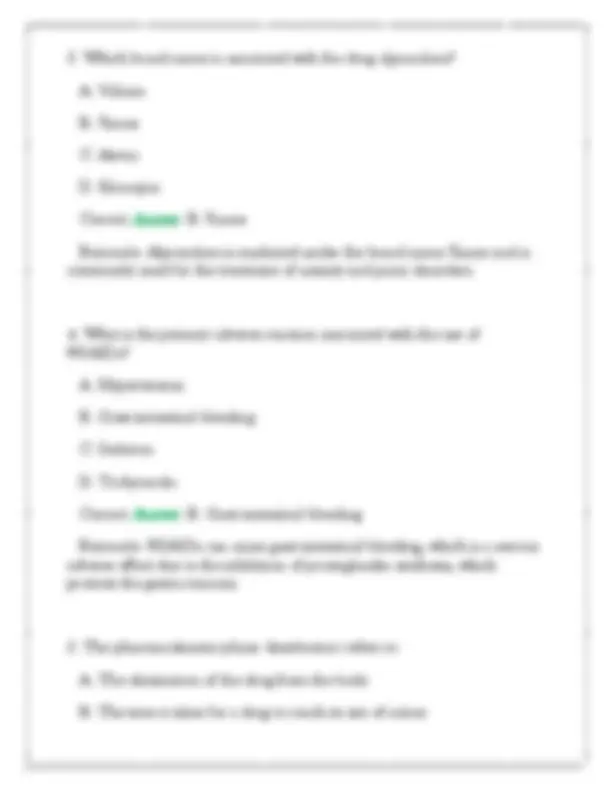
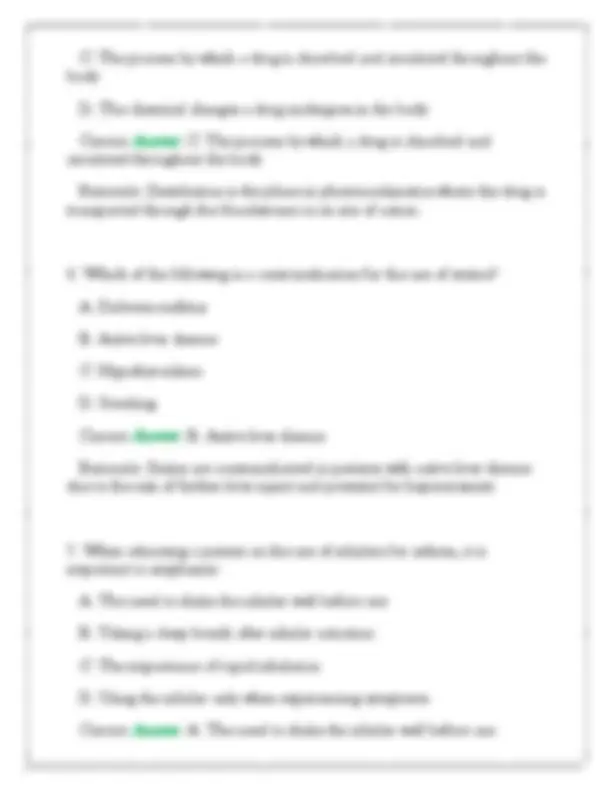
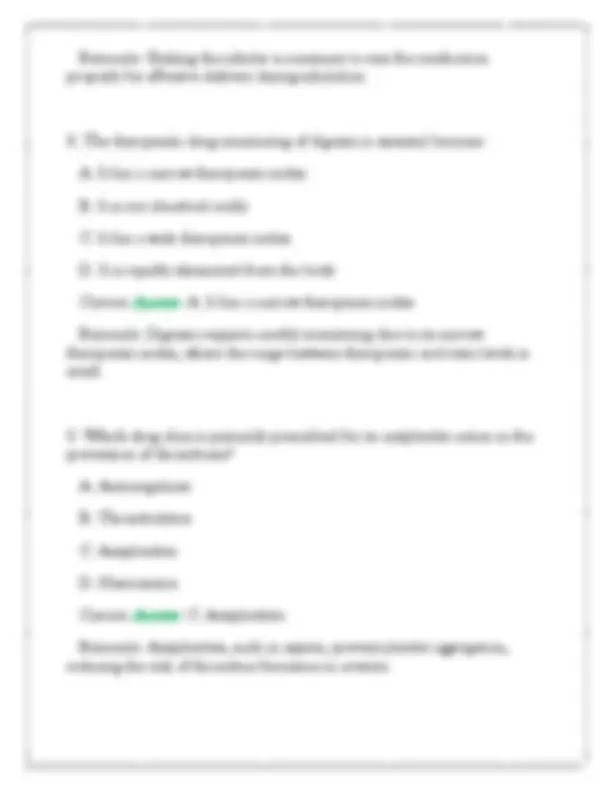
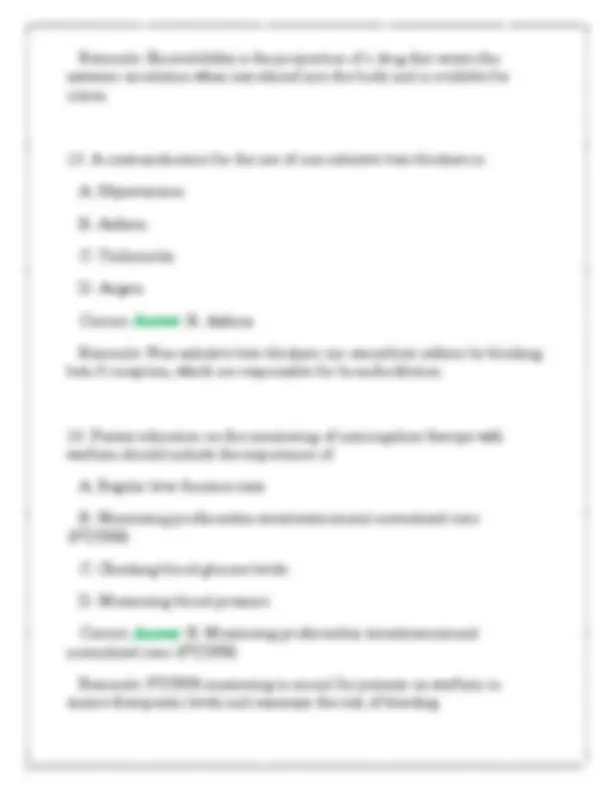
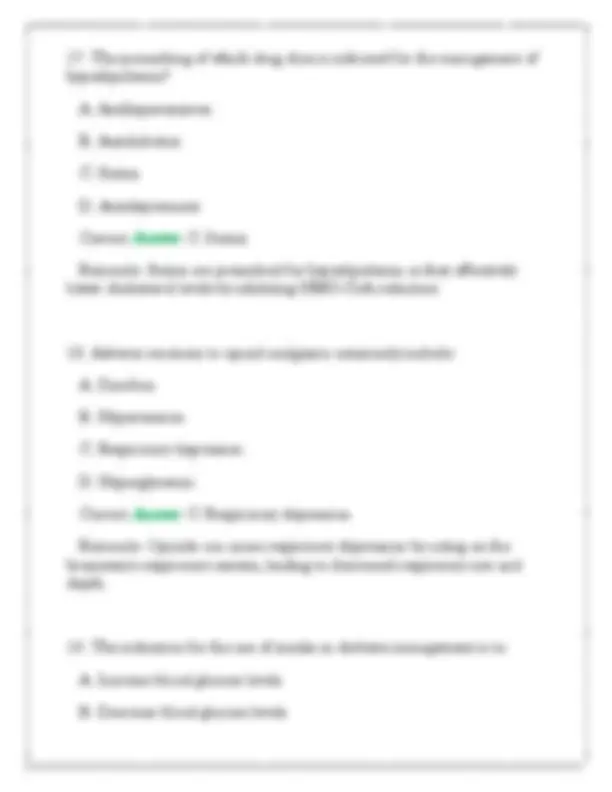
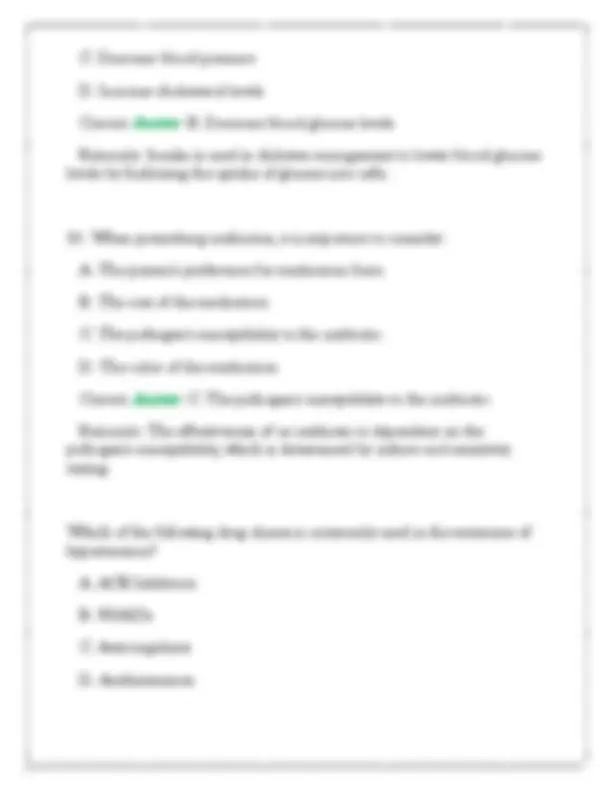
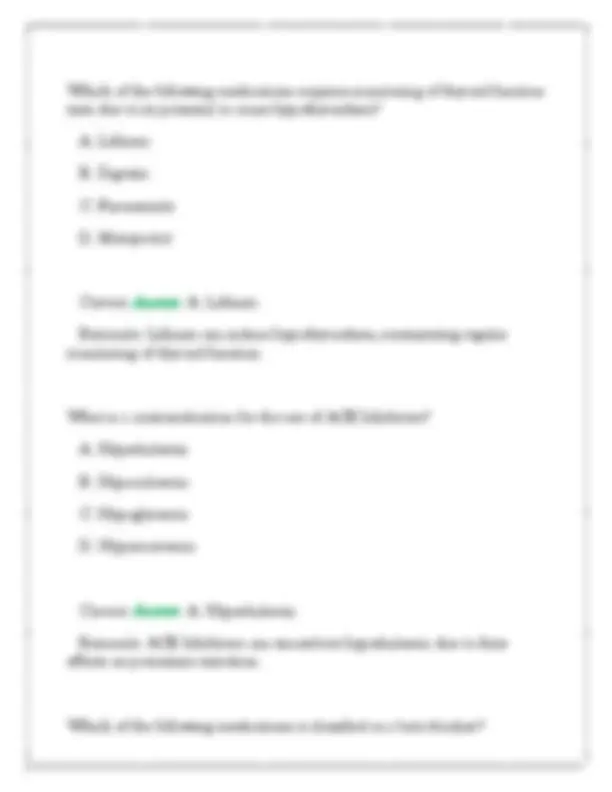
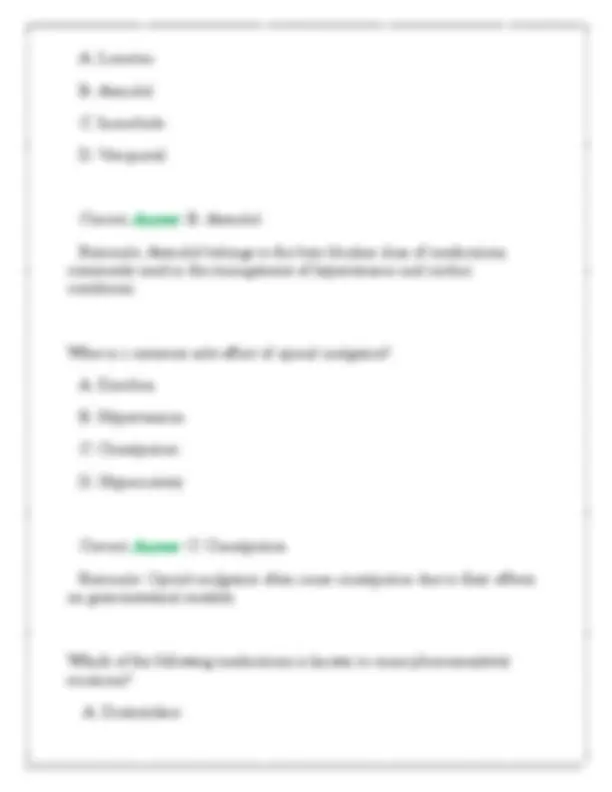
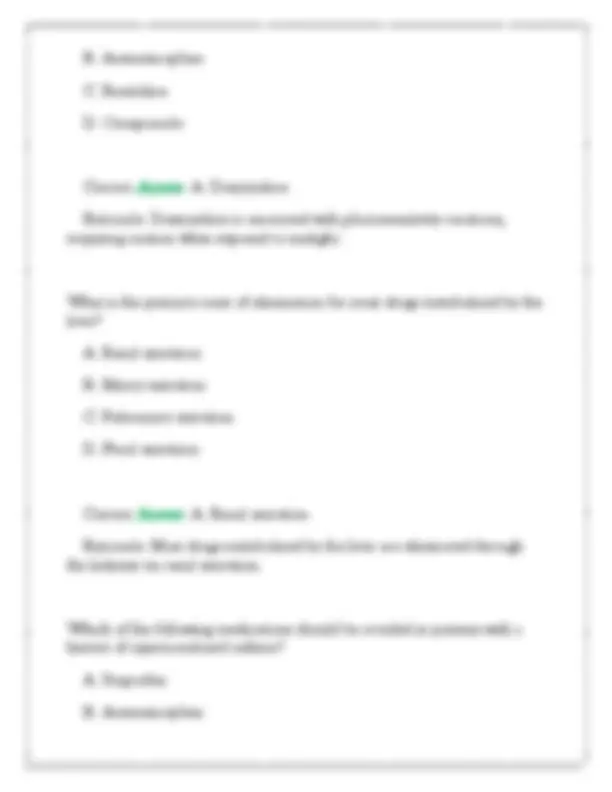
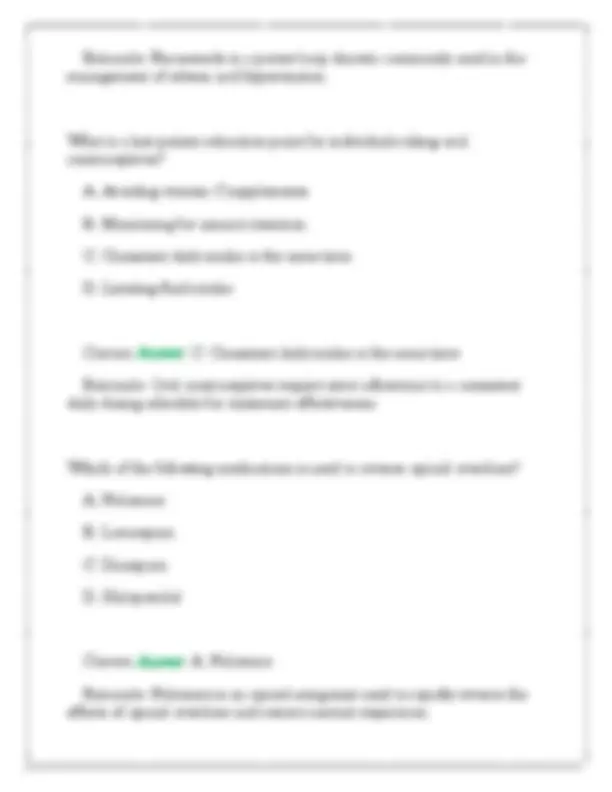
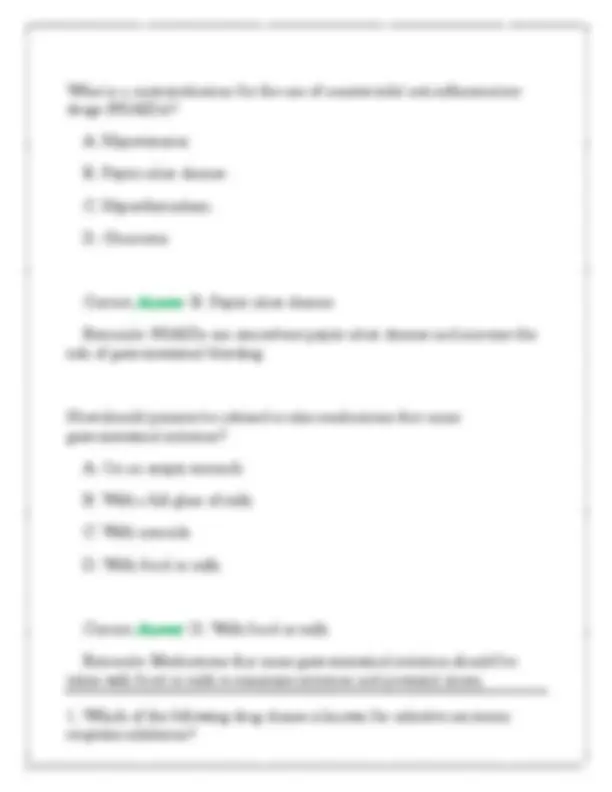
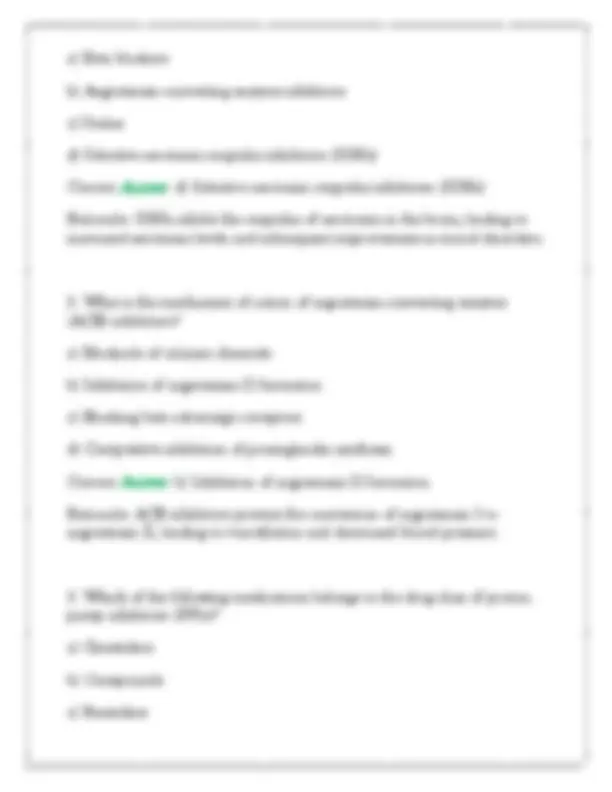
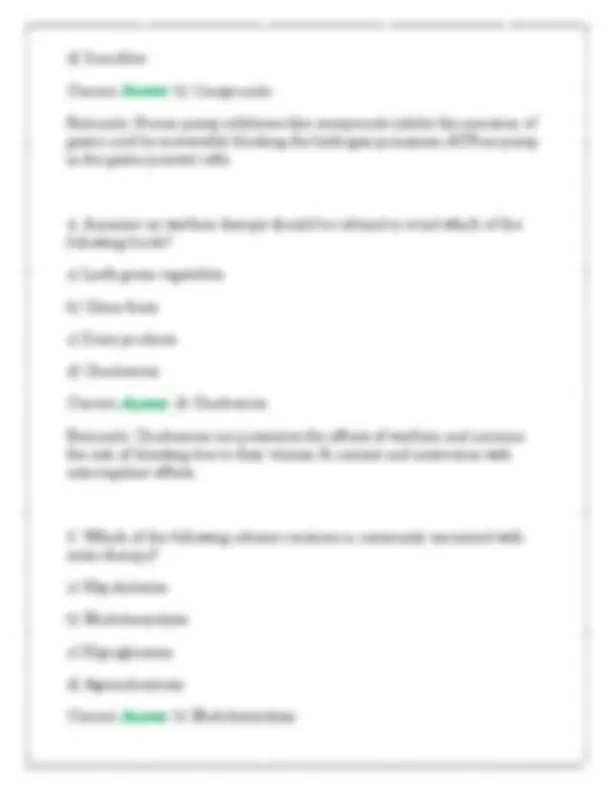
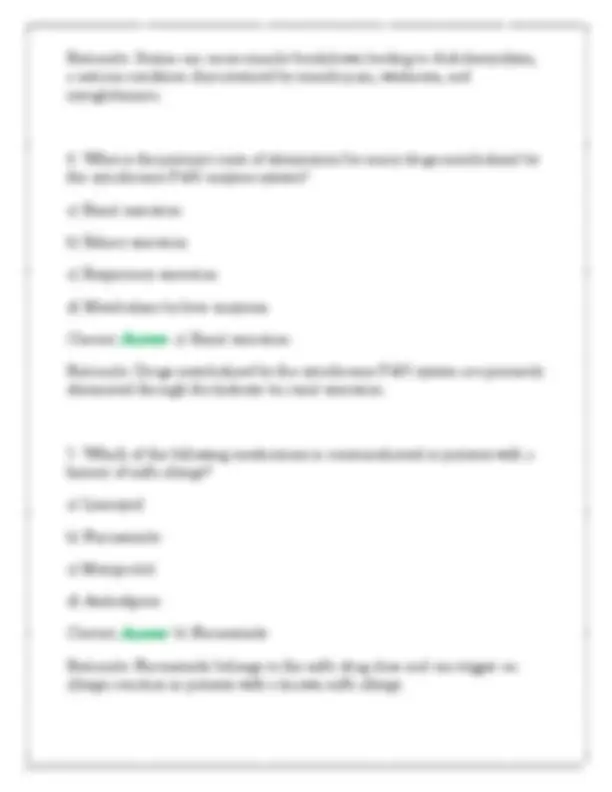
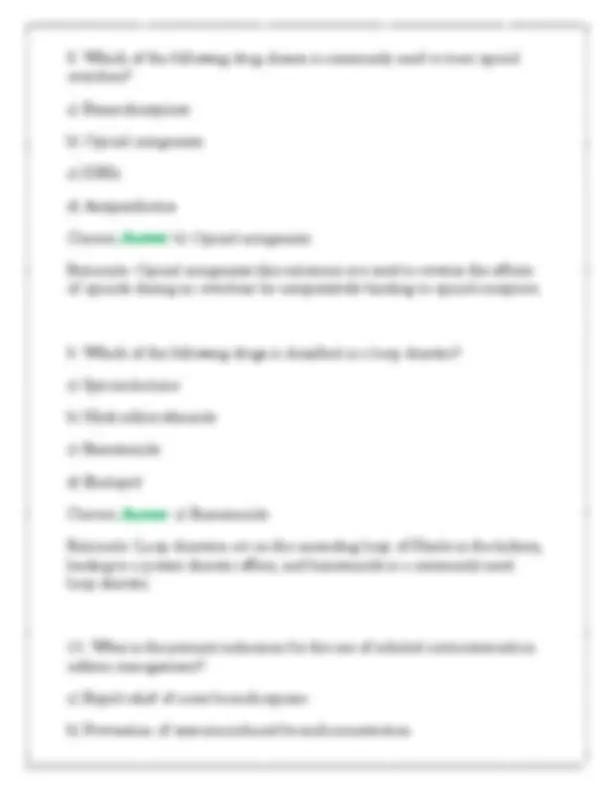
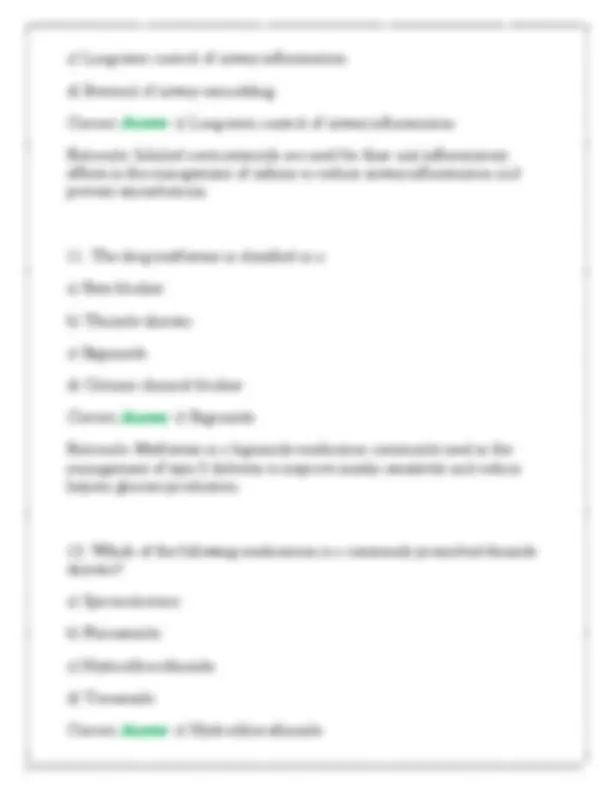
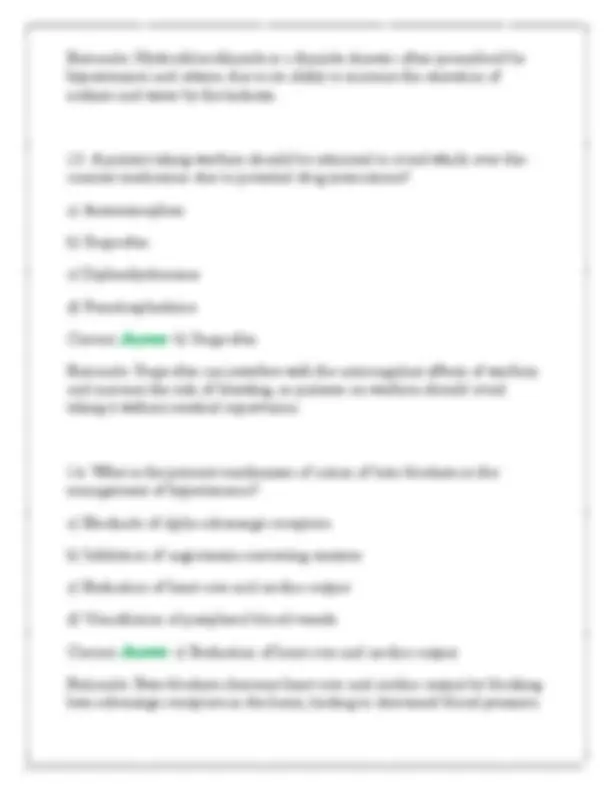
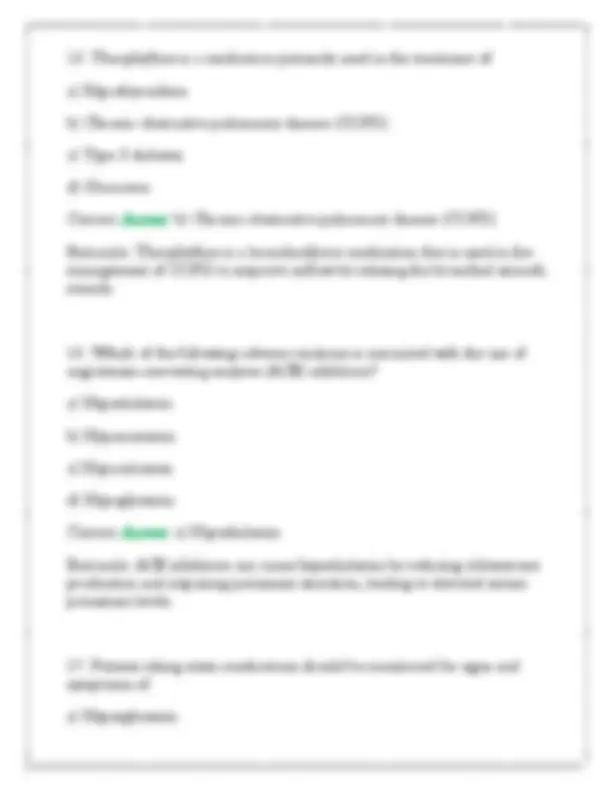
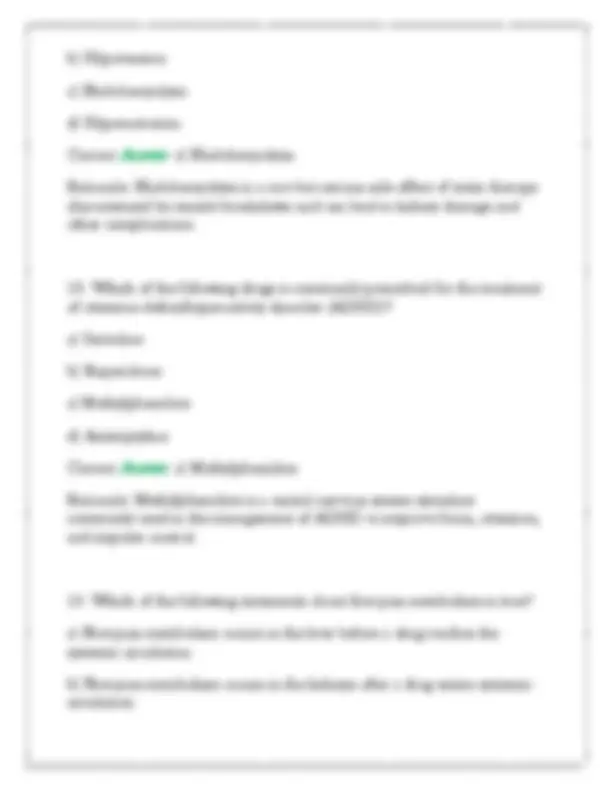
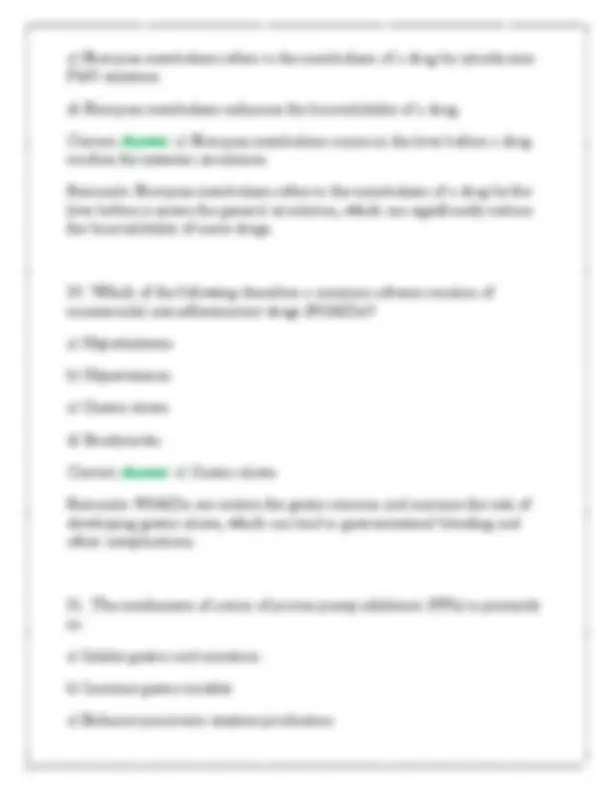
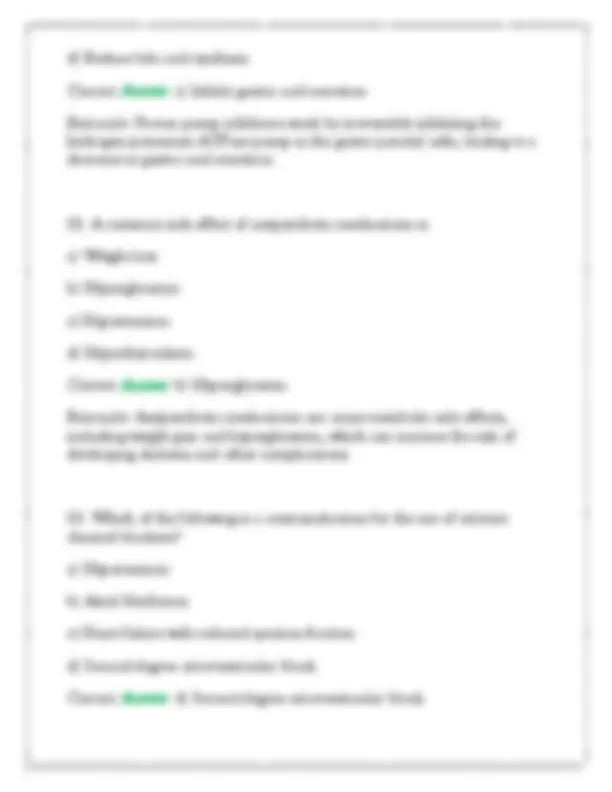
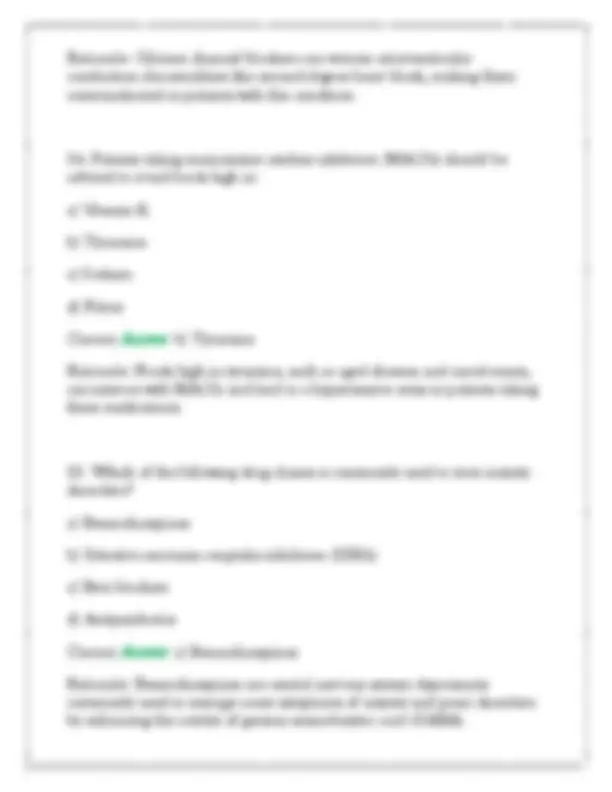
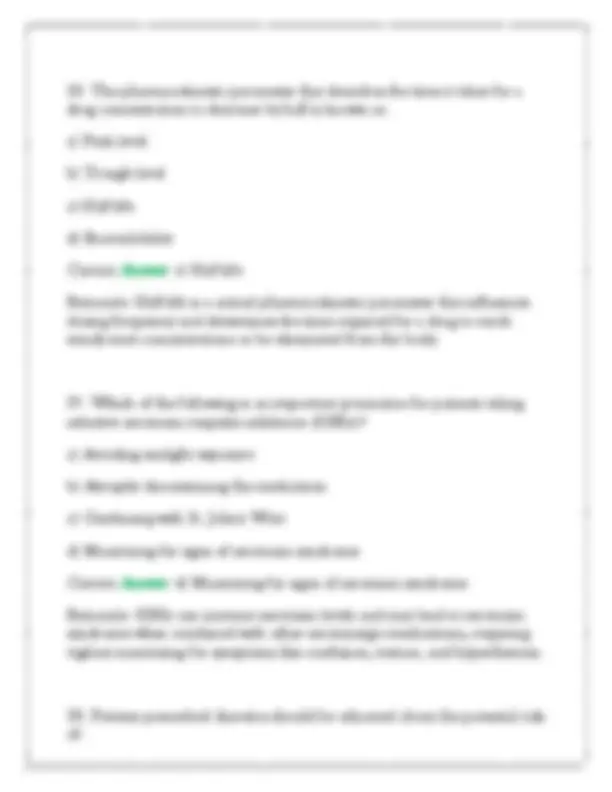
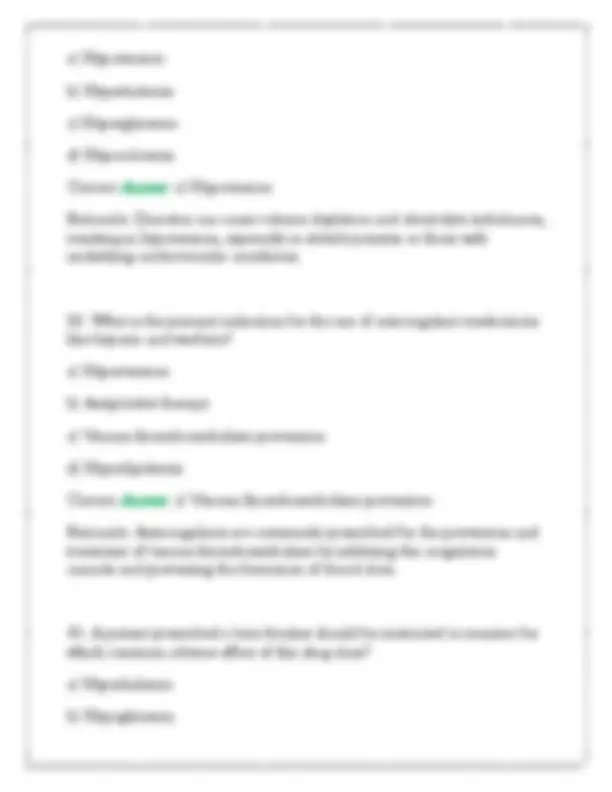
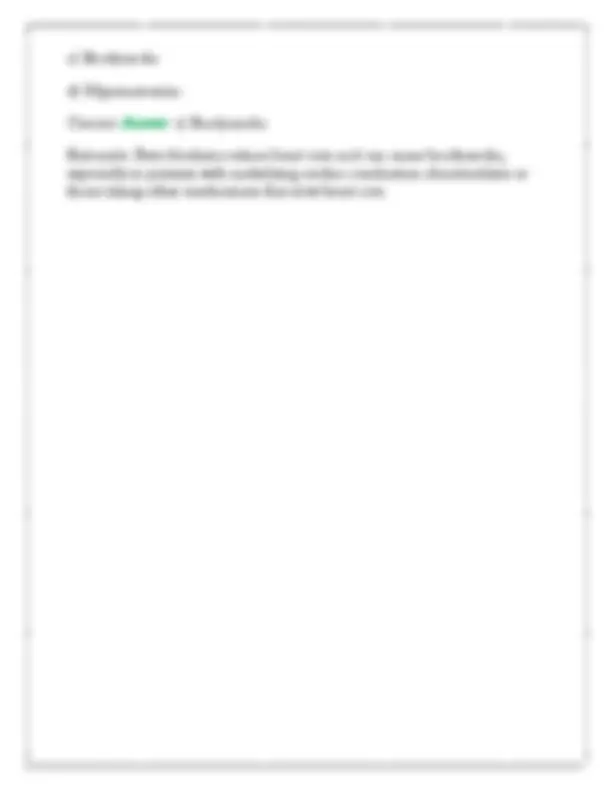


Study with the several resources on Docsity

Earn points by helping other students or get them with a premium plan


Prepare for your exams
Study with the several resources on Docsity

Earn points to download
Earn points by helping other students or get them with a premium plan
Community
Ask the community for help and clear up your study doubts
Discover the best universities in your country according to Docsity users
Free resources
Download our free guides on studying techniques, anxiety management strategies, and thesis advice from Docsity tutors
APEA 3P Pharmacotherapeutics Latest Completed Exam 2024APEA 3P Pharmacotherapeutics Latest Completed Exam 2024APEA 3P Pharmacotherapeutics Latest Completed Exam 2024APEA 3P Pharmacotherapeutics Latest Completed Exam 2024APEA 3P Pharmacotherapeutics Latest Completed Exam 2024
Typology: Exams
1 / 33

This page cannot be seen from the preview
Don't miss anything!


























Rationale: Beta-lactams, such as penicillins and cephalosporins, function by disrupting the synthesis of the bacterial cell wall, which is crucial for bacterial survival.
Rationale: ACE inhibitors lower blood pressure by inhibiting the angiotensin-converting enzyme, which results in decreased production of angiotensin II, a potent vasoconstrictor.
C. The process by which a drug is absorbed and circulated throughout the body D. The chemical changes a drug undergoes in the body
circulated throughout the body Rationale: Distribution is the phase in pharmacokinetics where the drug is transported through the bloodstream to its site of action.
Rationale: Statins are contraindicated in patients with active liver disease due to the risk of further liver injury and potential for hepatotoxicity.
Rationale: Shaking the inhaler is necessary to mix the medication properly for effective delivery during inhalation.
Rationale: Digoxin requires careful monitoring due to its narrow therapeutic index, where the range between therapeutic and toxic levels is small.
Rationale: Antiplatelets, such as aspirin, prevent platelet aggregation, reducing the risk of thrombus formation in arteries.
C. Inhibiting the enzyme that produces gastric acid D. Coating the stomach lining
Rationale: PPIs inhibit the hydrogen/potassium ATPase enzyme in the stomach lining, effectively reducing acid production.
Rationale: Chemotherapy can cause myelosuppression, leading to a decrease in blood cell production and increased risk of infection and anemia.
circulation
Rationale: Bioavailability is the proportion of a drug that enters the systemic circulation when introduced into the body and is available for action.
Rationale: Non-selective beta-blockers can exacerbate asthma by blocking beta-2 receptors, which are responsible for bronchodilation.
normalized ratio (PT/INR) Rationale: PT/INR monitoring is crucial for patients on warfarin to ensure therapeutic levels and minimize the risk of bleeding.
C. Decrease blood pressure D. Increase cholesterol levels
Rationale: Insulin is used in diabetes management to lower blood glucose levels by facilitating the uptake of glucose into cells.
Rationale: The effectiveness of an antibiotic is dependent on the pathogen's susceptibility, which is determined by culture and sensitivity testing. Which of the following drug classes is commonly used in the treatment of hypertension? A. ACE Inhibitors B. NSAIDs C. Anticoagulants D. Antihistamines
Rationale: ACE Inhibitors are frequently prescribed for hypertension due to their ability to dilate blood vessels, reducing blood pressure. What is the mechanism of action of the drug "Warfarin"? A. Inhibition of platelet aggregation B. Blockade of angiotensin receptors C. Interference with vitamin K-dependent clotting factors D. Stimulation of insulin release
factors Rationale: Warfarin exerts its anticoagulant effects by inhibiting the synthesis of vitamin K-dependent clotting factors. Which of the following is an example of a selective serotonin reuptake inhibitor (SSRI)? A. Fluoxetine (Prozac) B. Lorazepam (Ativan) C. Amitriptyline (Elavil) D. Haloperidol (Haldol)
Which of the following medications requires monitoring of thyroid function tests due to its potential to cause hypothyroidism? A. Lithium B. Digoxin C. Furosemide D. Metoprolol
Rationale: Lithium can induce hypothyroidism, necessitating regular monitoring of thyroid function. What is a contraindication for the use of ACE Inhibitors? A. Hyperkalemia B. Hypocalcemia C. Hypoglycemia D. Hypernatremia
Rationale: ACE Inhibitors can exacerbate hyperkalemia due to their effects on potassium excretion. Which of the following medications is classified as a beta-blocker?
A. Losartan B. Atenolol C. Isosorbide D. Verapamil
Rationale: Atenolol belongs to the beta-blocker class of medications commonly used in the management of hypertension and cardiac conditions. What is a common side effect of opioid analgesics? A. Diarrhea B. Hypertension C. Constipation D. Hyperactivity
Rationale: Opioid analgesics often cause constipation due to their effects on gastrointestinal motility. Which of the following medications is known to cause photosensitivity reactions? A. Doxycycline
C. Naproxen D. Celecoxib
Rationale: Patients with aspirin-induced asthma are at risk of cross- reactivity with other NSAIDs like ibuprofen. What is a precaution associated with the use of statin medications? A. Avoidance in patients with liver disease B. Discontinuation in patients with diabetes C. Use in pregnant women D. Combination with grapefruit juice
Rationale: Statins can exacerbate liver dysfunction, necessitating caution in patients with liver disease. Which of the following drug classes is commonly used to treat gastroesophageal reflux disease (GERD)? A. Proton Pump Inhibitors B. Anticoagulants C. Antidepressants D. Antipsychotics
Rationale: Proton Pump Inhibitors are the first-line treatment for GERD due to their potent acid-suppressing effects. What is a potential adverse effect of angiotensin receptor blockers (ARBs)? A. Hyperkalemia B. Hypoglycemia C. Hypocalcemia D. Hypernatremia
Rationale: ARBs can lead to hyperkalemia by blocking the effects of angiotensin II on potassium excretion. Which of the following medications is classified as a loop diuretic? A. Hydrochlorothiazide B. Furosemide C. Spironolactone D. Metolazone
What is a contraindication for the use of nonsteroidal anti-inflammatory drugs (NSAIDs)? A. Hypertension B. Peptic ulcer disease C. Hyperthyroidism D. Glaucoma
Rationale: NSAIDs can exacerbate peptic ulcer disease and increase the risk of gastrointestinal bleeding. How should patients be advised to take medications that cause gastrointestinal irritation? A. On an empty stomach B. With a full glass of milk C. With antacids D. With food or milk
Rationale: Medications that cause gastrointestinal irritation should be taken with food or milk to minimize irritation and potential ulcers.
a) Beta blockers b) Angiotensin-converting enzyme inhibitors c) Statins d) Selective serotonin reuptake inhibitors (SSRIs)
Rationale: SSRIs inhibit the reuptake of serotonin in the brain, leading to increased serotonin levels and subsequent improvement in mood disorders.
Rationale: ACE inhibitors prevent the conversion of angiotensin I to angiotensin II, leading to vasodilation and decreased blood pressure.